Anax imperator - Emperor dragonfly
Phylum: Arthropoda - Class: Insecta - Order: Odonata - Family: Aeschnidae
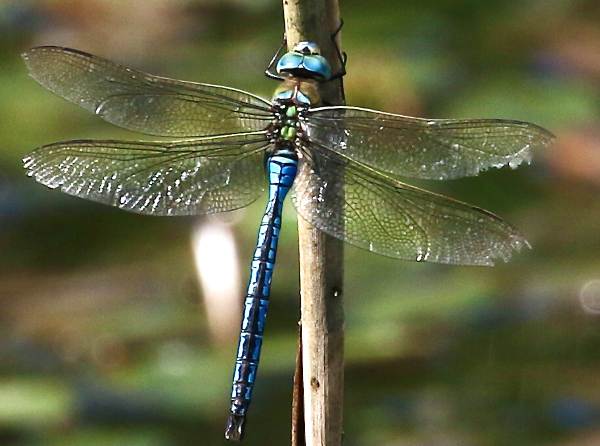
The largest of the hawker dragonflies found in Britain, this is a common species in southern England and Wales.
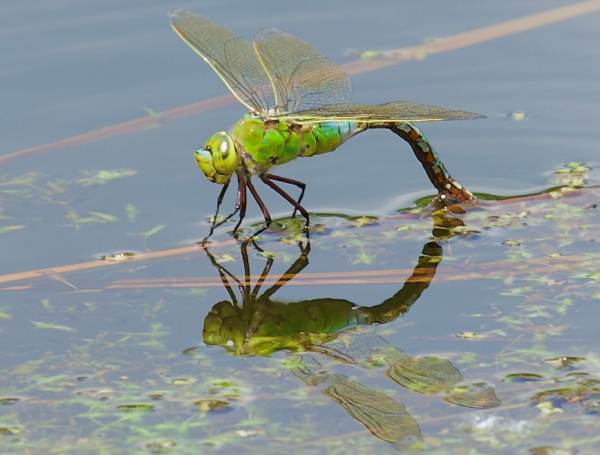
On reflection: A female Emperor Dragonfly and its image on the surface of a pond
Description
With an overall length of typically 7.8cm and a wingspan of about 10.5cm, this is Britain's largest dragonfly species. The male (pictured below) has a bright blue abdomen, an apple-green thorax and blue eyes. The female, seen above laying eggs on emergent vegetation, has a greenish tinge, becoming gradually bluer when old.
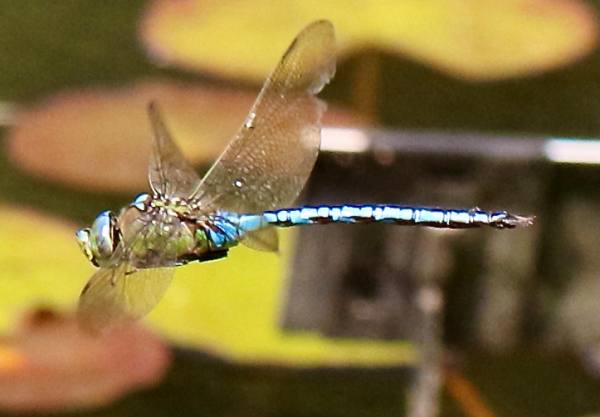
A male Emperor dragonfly hunting small insects above a pond.
Distribution
In Britain this is mainly a south-western species, quite common in Wales and south-west England but uncommon to rare in the east and further north. It is an occasional sight in southern Scotland. On the mainland the Emperor Dragonfly is found throughout most of Europe and eastern Asia; it is also a common sight in much of Africa.
Habitat
Mainly seen over large, densely-vegetated ponds, flooded gravel pits, shallow lakes, canals, large ditches and slow-flowing streams, this beautiful insect flies for long periods without resting, which makes it a difficult dragonfly to study.
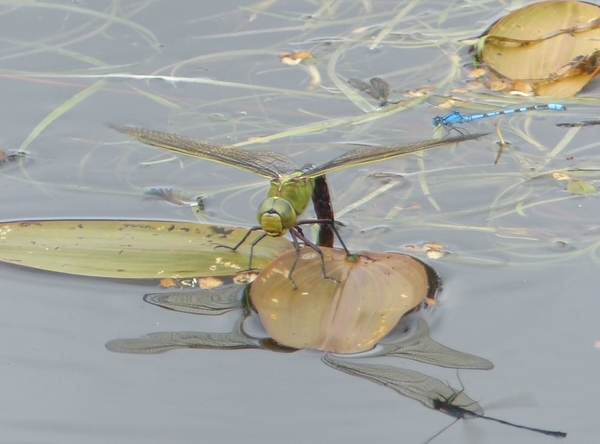
The female Emperor (or should that be Empress?) Dragonfly is so engrossed in the task of depositing eggs on the edge of a Broad-Leaved Pondweed leaf that she ignores the damselfly that has alighted on her wing.
Life Cycle
Emperors, which can be seen on the wing in Britain from early June until August or early September, are univoltine. The eggs hatch after about three weeks, and then the juvenile insects spend either one or two years as larvae, eventually emerging as winged adults during the night.
The males are territorial and patrol the water margins, chasing off intruders. Females are seen less frequently than males but they become more conspicuous when they are laying eggs, which they deposit on pondweed just below the surface of the water.
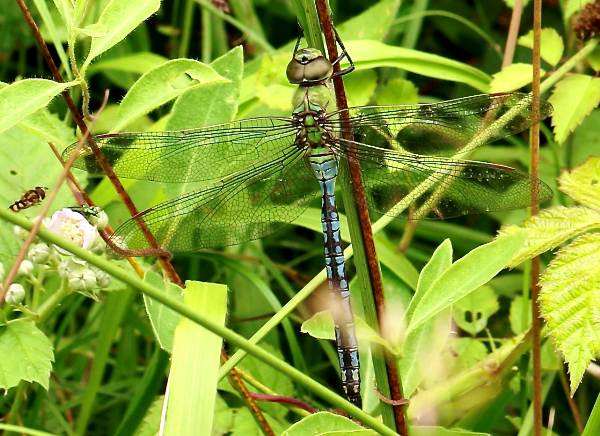
Acknowledgements
This page includes pictures kindly contributed by James Wainscoat and Rex Bradshaw.
Excited at the prospect of flyfishing? So are we, and we're pretty sure you would find the Winding River Mystery trilogy of action-packed thrillers gripping reading too. Dead Drift, Dead Cert, and Dead End are Pat O'Reilly's latest river-and-flyfishing based novels, and now they are available in ebook format. Full details on our website here...
Buy each book for just £4.96 on Amazon...
Please Help Us: If you have found this information interesting and useful, please consider helping to keep First Nature online by making a small donation towards the web hosting and internet costs.
Any donations over and above the essential running costs will help support the conservation work of Plantlife, the Rivers Trust and charitable botanic gardens - as do author royalties and publisher proceeds from books by Pat and Sue.
